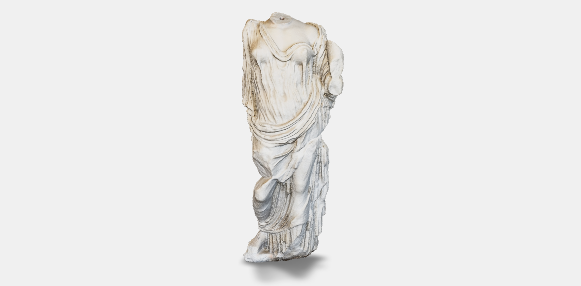Statue without the head, a part of the neck, the right arm, the left forearm and the left foot, found in 1923-1924 in the waters of the port of Baia among the submerged remains of the imperial palace.
The sculpture – a version of the type known as Hera Borghese, a Roman copy (maybe from the Flavian age) of a bronze Greek original – represented Tyche, the personification of luck, as the remains of a cornucopia on her left arm show.
The sketchy execution of the back suggests that it was placed in a niche, i.e. to be seen only from the front.
The name of the copyist, Karos, maybe from Puteoli, might be attributed to a disciple of Aphrodisios Athenaios, head of the workshop and author of the copy of Hera Borghese of Baiae.
The statue does not show signs of biological degradation.
Maniscalco, F. 1995, ‘Un ninfeo severiano nelle acque del porto di Baia’, Ostraka, 4(2), p. 268.
Maniscalco, F. 1997, Ninfei ed edifici marittimi severiani del Palatium imperiale di Baia. Napoli: Massa Editore, p. 57.
Napoli, M. 1953 ‘Di una villa marittima di Baia’, Bollettino di Storia dell’Arte. Istituto Universitario di Magistero, Salerno, III(1), pp. 80-82.
Zevi F. (cur.) 2009, Museo archeologico dei Campi Flegrei. Castello di Baia. Napoli: Electa Napoli, vol. 3, p. 129



